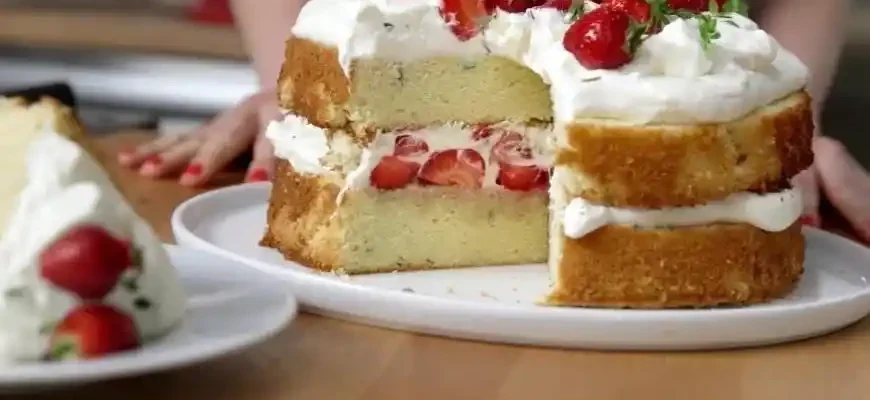Making a cheesecake is a bit like writing a symphony. You need the right balance of ingredients, a good amount of patience, and a touch of creativity. Whether you’re a beginner or a seasoned baker, cheesecake is a crowd-pleaser. But it’s not just about getting the ingredients right; it’s about understanding the science behind them, knowing how to avoid common pitfalls, and tweaking the recipe to your taste. Let’s dive in.
The Basics of Cheesecake
A cheesecake is made from three main components:
- The crust – usually made from crushed biscuits, sugar, and melted butter.
- The filling – typically cream cheese (though other cheeses can be used), eggs, sugar, and flavorings.
- The topping – this can vary widely from fresh fruit to chocolate ganache, or just a dusting of powdered sugar.
Ingredients and Their Importance
1. Crust Ingredients
The crust is the foundation of your cheesecake. Usually, a mix of crushed graham crackers (or digestives), sugar, and butter is used. You can experiment with different biscuits, like Oreo cookies for a richer flavor. Some people also add a pinch of salt or cinnamon for extra flavor depth.
Tip: Don’t over-bake your crust. It should be crisp, not burnt.
2. Filling Ingredients
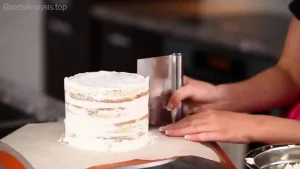
This is where the magic happens! The main ingredient is cream cheese. It’s creamy, tangy, and rich, which gives cheesecake its signature texture and flavor. To make sure your filling is smooth and not lumpy, ensure that your cream cheese is at room temperature before mixing it.
You’ll also need sugar (preferably granulated or powdered) and eggs to bind everything together. Some recipes call for sour cream or heavy cream for extra richness and smoothness.
Tip: Don’t overmix the batter, or you’ll risk introducing air bubbles, which can cause cracks during baking.
3. Topping
This is the fun part! You can get creative with your toppings. Fresh fruit like strawberries or blueberries is popular, but chocolate ganache or caramel also works wonders. Some people even add a little whipped cream or a drizzle of honey.
Tip: Add your topping after the cheesecake has cooled to avoid sogginess or melting.
The Baking Process: Patience is Key
Baking a cheesecake is an art, not a race. You need to bake it slowly and gently, usually in a water bath (also called a bain-marie). This helps maintain moisture in the oven and ensures the cheesecake cooks evenly.
Steps for a classic water bath:
- Wrap the bottom of your springform pan with aluminum foil to prevent water from leaking in.
- Place the cheesecake pan inside a larger pan and fill the outer pan with hot water until it reaches about halfway up the side of the cheesecake pan.
- Bake at a low temperature, typically between 325°F (165°C) and 350°F (175°C), for 45 minutes to 1 hour.
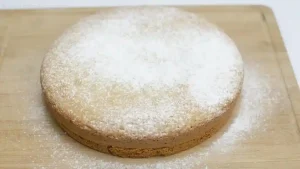
The cheesecake is done when the center is slightly wobbly. It will continue to firm up as it cools.
Tip: Don’t open the oven door while baking. Sudden temperature changes can cause cracks.
Common Problems and How to Avoid Them
- Cracks: One of the most common cheesecake issues. Cracks usually form when the cheesecake bakes too quickly or the filling is overbeaten. To avoid this, bake at a low temperature and use the water bath method mentioned earlier.
- Soggy crust: This happens when the crust absorbs moisture from the cheesecake filling. To prevent this, you can bake the crust for 10 minutes before adding the filling, or you can line the bottom of the pan with parchment paper for added protection.
- Overbaking: Overbaking leads to a dry, crumbly texture. The key to perfect cheesecake is removing it when the edges are set, but the center is still a bit jiggly. It will firm up as it cools.
- Undercooked center: A runny center usually means you haven’t baked it long enough, or the oven temperature is too low. It’s best to follow your recipe’s time and temperature guidelines precisely.
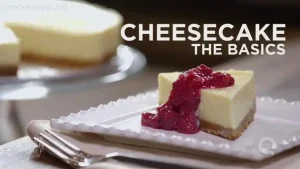
How to Customize Your Cheesecake
Now that you’ve mastered the classic cheesecake, you can start experimenting. Want a chocolate cheesecake? Mix melted chocolate into the filling. Craving a fruity cheesecake? Blend fruit purees like mango, raspberry, or blueberry into the batter. The possibilities are endless!
You can also adjust the level of sweetness and add flavorings like vanilla extract, lemon zest, or even liqueurs (Baileys or Grand Marnier work wonders in some recipes).
Tip: If you’re experimenting with ingredients or flavors, start with small portions and take notes. It’s easier to adjust a small batch before committing to a full-sized cheesecake.
A Few Words on Health Considerations
Now, while cheesecake is undeniably delicious, it’s also rich. For those watching their calorie intake or managing specific health conditions (like diabetes), it’s wise to be mindful of portions. If you’re trying to make a healthier version, here are a few tips:
- Use low-fat cream cheese or even Greek yogurt as a substitute.
- Sweeten with natural alternatives like stevia or monk fruit.
- Make a gluten-free crust by using ground nuts instead of biscuits.
- Use egg substitutes if you’re avoiding eggs or want a vegan option.
For people with food sensitivities or those on restricted diets, it’s always a good idea to consult with a nutritionist to ensure your cheesecake aligns with your dietary needs.
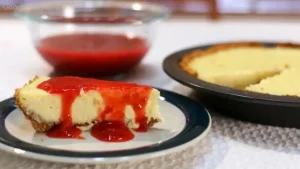
Personal Insights from Around the World
Let’s hear what people from different backgrounds have to say about cheesecake.
- Maria (Spain, 38): “I adore making cheesecake with fresh seasonal fruits from our garden. My favorite is lemon and blueberry! But I make sure to bake it slowly in a water bath—it’s the only way to get it perfect.”
- John (USA, 65): “I’ve been making cheesecake for over 40 years. The biggest mistake I see with people trying to bake cheesecake is not allowing it to cool properly. It’s tempting to eat it right out of the oven, but trust me, it’s worth the wait.”
- Anita (India, 28): “In India, we often make cheesecakes with paneer instead of cream cheese. The texture is a bit different, but it’s just as delicious. Plus, it’s a great way to use up leftover paneer!”
- Tariq (Pakistan, 53): “Cheesecake is a bit of an indulgence for me, but when I make it, I make it with love. I add cardamom to the crust for a unique twist—gives it a great aromatic flavor.”
- Lucia (Italy, 42): “In Italy, we’re a bit more traditional with our ricotta-based cheesecakes, especially during the holidays. It’s simple, but nothing beats that creamy texture with a drizzle of honey on top.”
Conclusion
Whether you’re a novice or a seasoned baker, making cheesecake is a rewarding experience. The key is to follow the steps carefully, learn from your mistakes, and have fun experimenting with new flavors. Yes, there are pitfalls, but they’re all part of the learning process. And remember, even if your cheesecake isn’t perfect, it’ll still be delicious.
So, grab your ingredients, preheat the oven, and get baking! You’ve got this.

